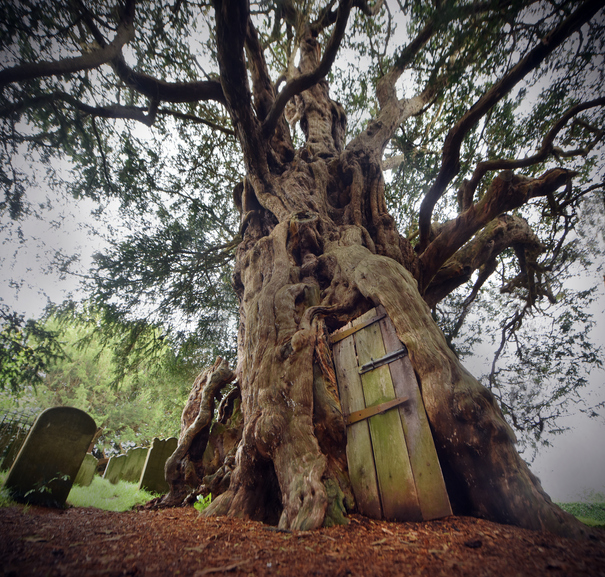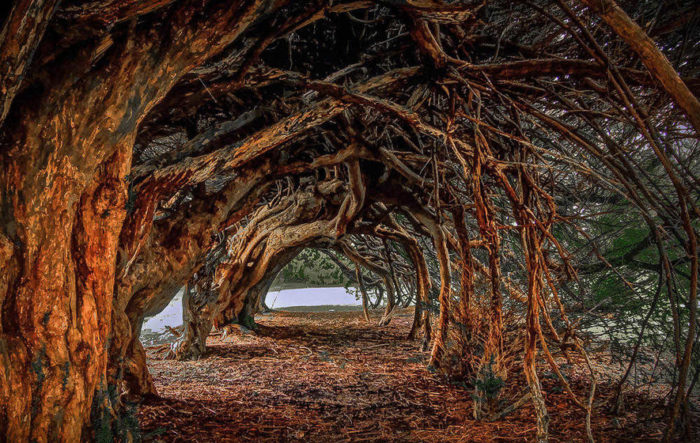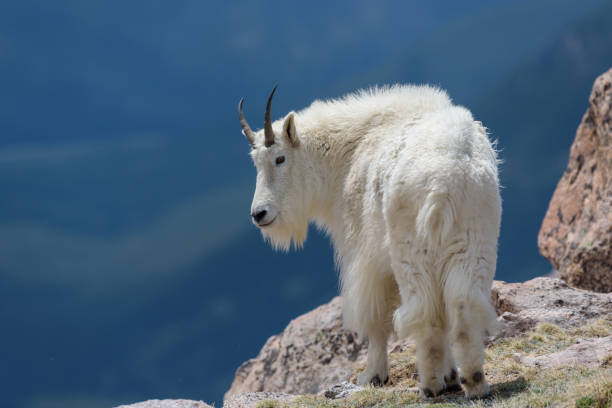Symbolism Of Yew Tree – Life, Death And Resurrection
The symbolism of the Yew tree is rich and well documented.
It is sometimes known as The Tree Of Life, and much of the meaning of the Yew tree surrounds ideas of life, death, and resurrection.
The Yew is native to Great Britain and Ireland and can be found commonly across Western Europe.
It is evergreen, meaning that it does not lose its needles during the winter.
It is also very poisonous, with every part from needle to bark being toxic – except the flesh of the berry.
This tree was central to the Celtic tradition in pre-Roman Britain.
As a result, there are many famous Yews found in ancient sites around the UK.
The oldest of these is likely to be the Fortingall Yew in Perthshire, Scotland, which is estimated to be between 2000-3000 years old.
Even after the arrival of the Romans and Christianity in Britain, this tree kept its spiritual importance.
As a result, many of the oldest and largest are found on church grounds, including the Bleeding Yews of Nevern in Pembrokeshire.
Symbolism Of Yew Tree: Life & Longevity
According to some sources, the Yew is the only living thing capable of living indefinitely.
Its longevity is legendary, with the Fortingall as mentioned earlier, Yew thought to be the oldest living plant in Europe.
Although specimens older than 400-600 years are very rare today, in the pre-Roman times, they would have been far more common.
As a result, the Celtic Druids revered the tree, and it became central to their cultural and religious belief systems.
The key to the longevity of this species is in its ability to recover from damage.
When a tree fractures due to weather conditions or outside interference, most species will succumb to infection and die quite quickly.
However, the Yew is not only able to survive such a fracture by resisting disease; it can thrive.
New branches grow from the fractures in the trunk.
This has come to symbolize perseverance as the secret to life, as an injury that would kill a lesser tree only serves to spur on new growth in this one, allowing it to succeed where others would not.
You can apply this to your own problems. When something threatens to break you, it is an opportunity to grow as a person.
Learning to overcome the current problem will better prepare you for other challenges down the road.
Symbolism Of Yew Tree: Death
Yew trees have a rich symbolism surrounding death and dying.
It likely comes from the fact that almost every part of the tree, from needles to bark, contains toxic substances that are deadly poisonous to humans (as well as many other animals).
In fact, people have long used this fact to produce poisons, deepening the symbolism.
A clue to this can be found in Shakespeare’s “Macbeth,” where “slips of Yew” were used in the creation of a deadly poison.
We also have a passage written by Julius Caesar, telling of a Germanic King who poisoned himself with a brew made from the tree rather than submitting to Rome.
This death symbolism is important because it produces a dichotomy – Life and Death.
These two concepts are clearly intertwined, and the fact that both are represented in the Tree of Life is important and meaningful.
It was certainly meaningful to early Christian Britain after the arrival of the Romans.
Yew shoots were commonly buried with the deceased as a symbol of death, and the branches were a popular choice for Palm at Easter.
As a result of the former, Yews are very common in graveyards and cemeteries.
There was one instance of an old specimen in a graveyard that was knocked over by strong winds.
Its roots were upturned, and contained within them were the remains of around 40 people who had been buried there centuries before.
Symbolism Of Yew Tree: Rebirth
If the dichotomy of Life and Death was not enough, we can now see a Trinity in the symbolism of the Yew – Life, Death, Rebirth.
You might recognize this as very similar to the ideas of reincarnation common amongst Eastern traditions.
It is also quite remarkable in the way it can revive its own fortunes.
Even if the trunk dies and rots, a “new” trunk often grows within the old one and brings the whole organism back to thrive once more.
That’s not all. The branches of some have been known to reach the ground and sprout children directly from the parent, blurring the lines between the two. In this way, it is constantly reborn.
The symbolism around rebirth is common, but it does not exclusively relate to the idea of reincarnation. In fact, the most common rebirth we talk about is personal growth.
The death of the old way of thinking makes way for the birth of a new one.
When you rid yourself of a bad habit and replace it with a good one, you are reborn.
The “old you” is gone, and in their place is the “new you.”
Cast your mind back to the image of a dying Yew tree, with its own offspring growing within the husk it leaves behind.
This process is at the center of many belief systems today.
In fact, we currently live in an era where personal growth is considered to be particularly important – just look at the growth in sales of self-help books and personal development classes.
Perhaps this played a part in the project by David Bellamy, which began in 1996 with the intention of bringing the Yew back into Britain’s churches and gardens.
Of course, it could just as well be the other way around, with the resurgence of this highly symbolic species planting the seed of growth in the minds of the people.







